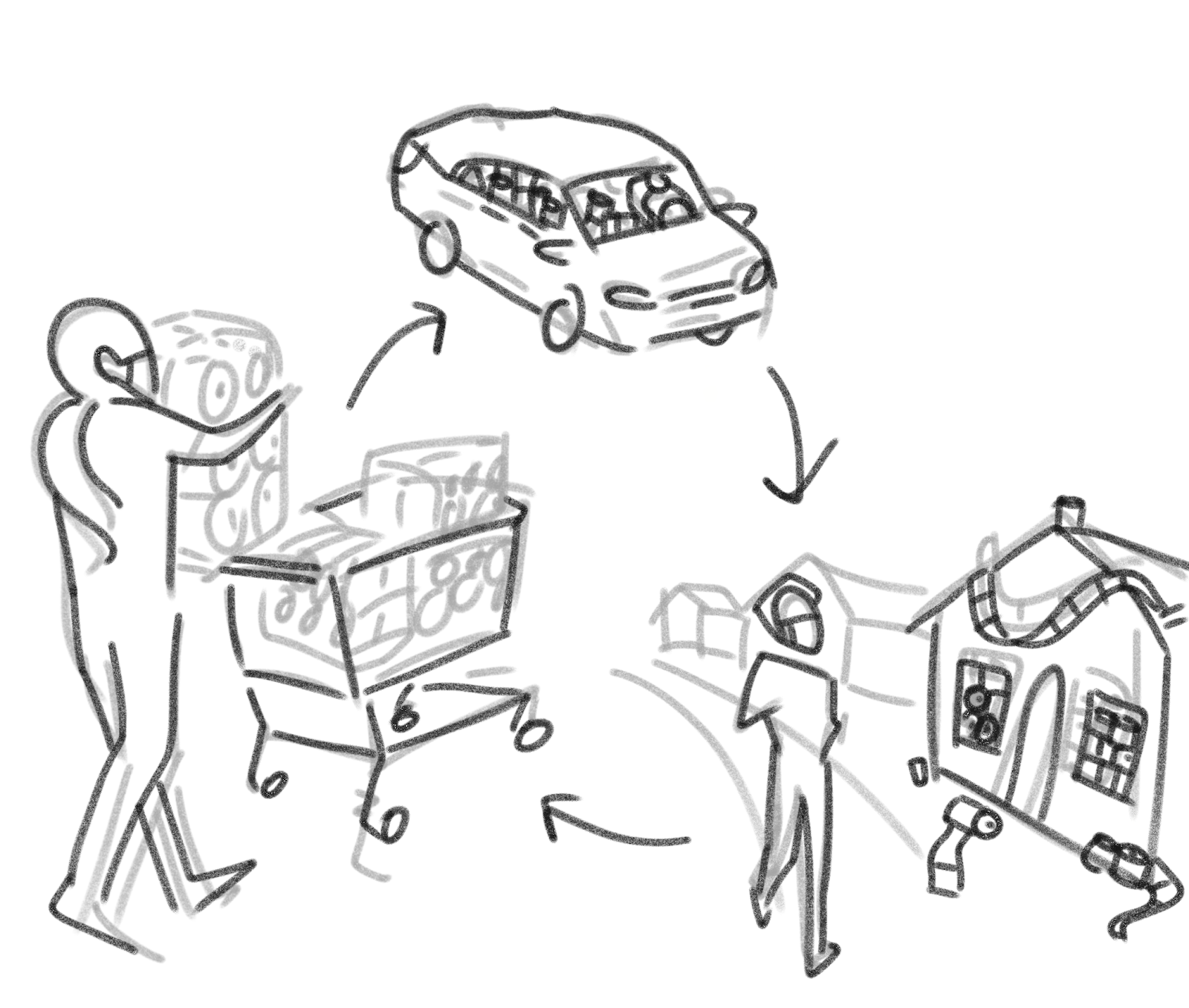Hoards and hauls
The issue with mass stockpiling
Amid the COVID-19 pandemic, many have found themselves struggling to get by. Small businesses are hustling to keep themselves afloat, school districts are scurrying to create successful online learning systems, and medical staffers are working excruciatingly long hours to help those in need.
To lessen the spread of the virus and its chaos, state governors have urged citizens to stay home by enforcing stringent stay-at-home orders––some states even administering fines for non-essential travel. This has led many Americans to stockpile on everyday items. People are hoarding exorbitant amounts of items—from rolls of toilet paper to cases of water—just so they can be prepared. While this reaction is understandable, stockpiling is doing more harm than good.
When customers stockpile superfluous amounts of items, grocery store chains are forced to place a limit on the number of items people can purchase because they are unable to accommodate the growth in consumer demand. This further feeds into the chaos, as the rarity—and thus, demand—of desired items increases.
Junior Kasey Thorpe mentioned her experience at Giant, where various items had limits placed on them. “I remember in the candy aisle you could only get like two to three bags of candy. When I was going to go get shampoo, you could only get either one [bottle] of shampoo [from one brand], one [bottle] of conditioner [from one brand], or you [could] get both [from the same brand],” Thorpe said.
This can harm those who need more than one item for specific reasons—like family size—because due to hoarding, they are now restricted to certain amounts.
In addition to limiting items, stores are limiting their hours and how many customers are allowed inside the store at the same time due to excessive stockpiling. Abha Bhattarai, a writer for The Washington Post, reported that places like Walmart, Kroger, and Dollar General have started to shorten store hours so employees have enough time to restock and disinfect the space. Costco, and many other food chains, even put a restriction on how many customers were allowed into the store at any given time. This can be detrimental to those who are in desperate need of items but are unable to buy them due for a variety of reasons, such as transportation or money issues.
These hoarding limits have a disproportionate impact on lower-income families. According to Abby Vesoulis, a writer for TIME, a 2019 Federal Reserve study found that 40 percent of Americans could not come up with $400 in order to support themselves during an emergency. Those same people end up going out to earn money, ultimately putting themselves and other people at risk. Additionally, people seeking funds have to consider limitations on items and the unpredictable changes in store hours, just to acquire what they need.
A prime example are those who depend on the Supplemental Nutrition Assistance Program (SNAP), known colloquially as food stamps. Food stamps are given out every month at a fixed amount that is based on a family’s gross monthly income, net income, and assets. However, the time between these monthly distributions can seem like forever. For instance, a family of four that depends on food stamps is allowed to purchase any quantity of item needed as long as it is within the benefits. However, if food chains have limited the quantity of food items, that family is forced to buy—for instance—one loaf of bread instead of two, which may not be enough to feed their family. This is just one way that the effects of excessive stockpiling can be detrimental to families in need.
Hoarding makes it harder for elderly groups to get grocery items as well. According to Centers for Disease Control and Prevention (CDC), those who are 65 years and older are at higher risk of contracting COVID-19, making interactions dangerous. When limits on grocery store items are placed and goods are available in lesser quantities, elderly groups are forced to either spend more time in stores than they would otherwise need to, risking their lives, to get groceries or to find others—like family members or neighbors—who can help them.
Organizations like Feeding America, No Kid Hungry, and Meals on Wheels are a few of many programs helping get food to communities in need. Junior Molly Merlocoyne mentioned that she volunteered for Meals on Wheels a few times, which helps deliver meals to home-bound people who may not be able to cook or shop for themselves.
“A lot of people are older and… have mobility issues or lower income[s], so they can't necessarily get to the store or buy things; and a lot of them can't cook for themselves” Merlocoyne said. “So, we provide a cold and… hot meal—Monday through Friday—to ease their worries about food insecurity.”
However, not every elderly person has access to programs, family members, or neighbors that are willing to help them out. This makes it especially hard as they are left to either risk their lives to get what they need, or struggle on their own. This challenge is exacerbated when there are fewer products available on the shelves.
Hoarding may appear to be a reasonable reaction to a dire situation; however, people must realize that the price of their preparation may be someone else’s suffering. Instead of senselessly hoarding items, think about what is truly necessary while considering those who are unable to get anything they please.
Show comments
Comments
No comments.
Please ensure that all comments are mature and responsible; they will go through moderation.
